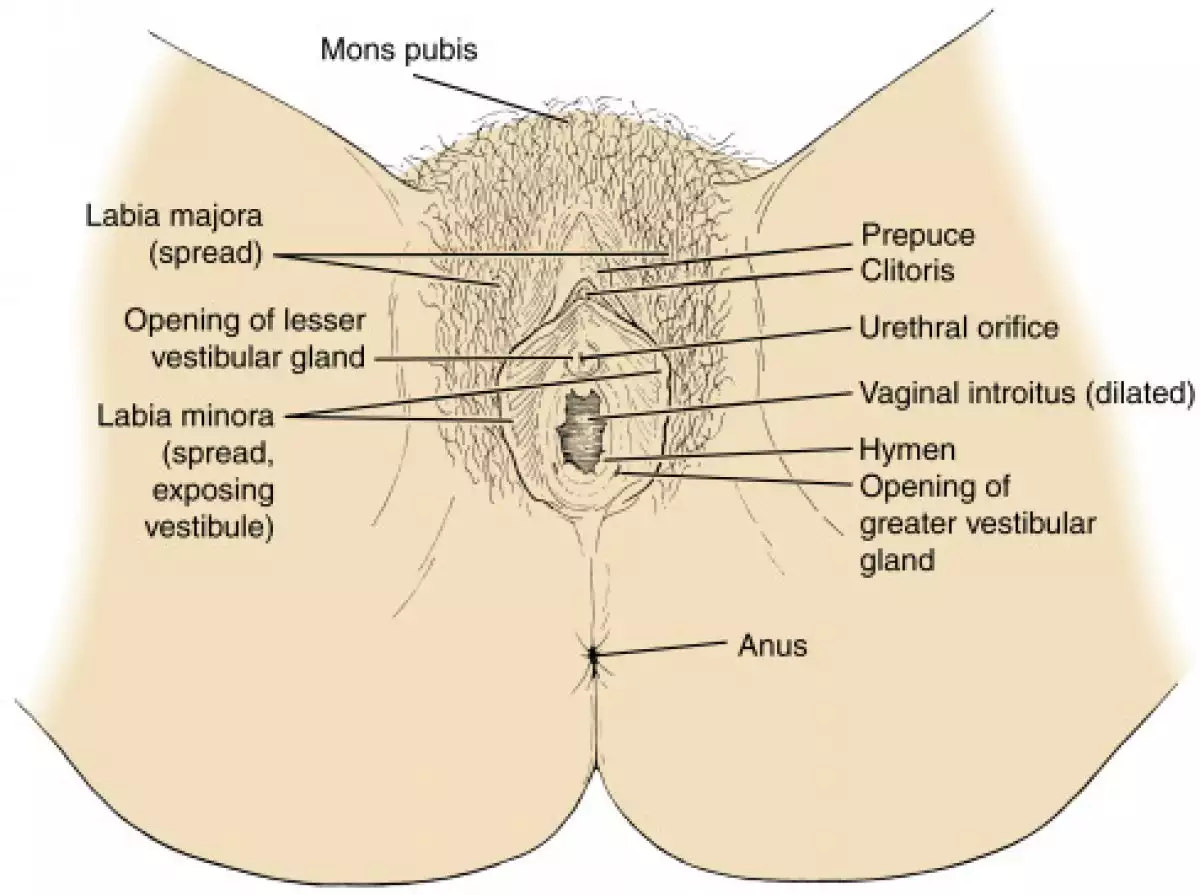The female reproductive system, also known as the female genital system, is an ensemble of interconnected organs that function in the reproduction of the species. This complex mechanism is also known as the female genital system because, aside from reproductive purposes, the organs and tissues that form it are a source of sexual pleasure as well as having other functions.
The name itself suggests differences from the male reproductive system, however, there are also various similarities between the two. This article aims to examine the female anatomy as well as learn more about the internal and external organs that form the genital system.
Female reproductive system, genital system or sexual organ?
The female reproductive system has been subject for research ever since the 16th and 17th century. In many of the occasions, the interest was focused on procreation while in others, far less numerous, on the inner workings of sexual pleasure. Although historically speaking, the female anatomy has been extensively examined, certain areas of interest have remained uncharted. This is the case of the clitoris and the female prostate, and it wasn't until a few decades ago that scientists started reexamining the anatomy of the clitoris more in-depth.
This is one of the reasons why in current medical literature we encounter different terminology related to the female body. Female reproductive system, genital system, or sexual organ are names that encompass the various organs and the functions they perform. The female reproductive organs can be subdivided into the internal and external genitalia and similarly to other systems of the human body, they are comprised of organs that perform specific functions and use hormones to communicate and regulate each other.
Female internal reproductive organs
The inner part of the female reproductive system is made up of various organs whose functions are to facilitate fertilization, fetal development, and childbirth - simply put, reproduction.
1. Ovaries
These small, spherical, paired organs located in the pelvic cavity are responsible for producing egg cells (ova) which are either fertilized by spermatozoids or expelled from the body through menstruation.
This process is known as ovulation, and it is completed on average after 28 days. In addition to developing ova, the ovaries produce hormones such as progesterone and estrogen which are essential in the body's overall development.
2. Uterus or womb
The uterus or womb is an inverted pear-shaped muscular organ that is divided into three layers: perimetrium, myometrium, and endometrium. This last layer is where fetal development will take place once fertilization occurs and if fertilization does not happen, the endometrium will regenerate itself while eliminating the old layer via menstruation and wait for reproduction to happen in the next month. The womb is the largest organ in the reproductive system, and the uterus anatomy is composed of muscles located between the rectum and the bladder.
3. Fallopian tubes
These curved, elongated organs are called tubes precisely because of their shape; they can reach 13 cm in length, and they were named after Italian doctor Gabriel Falopio, who was the first person to study them in the 16th century.
The primary function of the fallopian tubes is to connect the ovaries with the uterus, and it provides the ideal location for fertilization. Scientists use the term "migrate" when they refer to the egg cells lowering towards the womb as the fetal development progresses.
4. Vagina
The vagina is perhaps one of the most known organs in the female reproductive system, and sometimes it is mistaken for the vulva. The vagina is an internal organ, similar to a canal that connects the uterus with the external genital organs.
Due to its importance in connecting the internal with the external organs, the vagina has various functions such as eliminate menstrual blood and vaginal secretions, accommodate the male penis during intercourse, facilitate childbirth and sexual arousal.
The size and shape of the vagina can vary depending on each woman and similarly to the male reproductive system, the vagina becomes engorged (swollen) due to the increased blood supply. Inside the body, the top of the vagina expands.

Female external reproductive organs
Just like the name indicates, the external female reproductive organs are located outside of the body and are visible to the naked eye. They're also known as external sexual organs or simply genitals. In the case of female anatomy and its external components as a whole, the used term is vulva, and it is comprised of the following:
1. Vaginal opening
We mentioned previously how the vagina is the organ responsible with connecting the uterus to the genitals. One of the main parts of the vagina is the vaginal opening. This is the part of the vagina that contracts or dilates following sexual stimulationdeals with vaginal discharge or menstruation.
Behind the vaginal opening, there is a fragile membrane known as a hymen. Despite the common misconception that hymens are broken or torn after the first sexual contact, they are flexible membranes that usually return to their original state.
Damage to the hymen can also happen for various reasons during a woman's life, and it doesn't disappear after losing one's virginity (although some women are born without a hymen.) Therefore, the presence or absence of this membrane is not a definite indicator of intercourse.
2. Labia majora
The labia majora are relatively large, fleshy folds of tissue that enclose and protect the vulva and the other external genital organs. The labia majora are made out of cells, sweat glands, tissue, and follicles. They are comparable to the scrotum in males - they are embryologically derived from the same tissue.
The labia majora also represent the final element in the mons pubis, the rounded eminence lying in front of the pubic bone, made out of fatty tissue beneath the skin and covered by hair at puberty.
3. Labia minora
The labia minora are thin flaps of skin located on the outside of the body, positioned slightly more inward than the labia majora. They were given this name because of their smaller size compared to their counterpart.
Another difference to the labia majora is that they don't have any follicles or sweat glands and they share nerve endings with the clitoris. This is why it exhibits a hood-like skin formation, called the prepuce or foreskin, that covers the most sensible parts of the clitoris.
4. Vaginal vestibule
We are looking at the vaginal vestibule, a part of the vulva which is highly vascularized and shares some nerve endings with the clitoris while marking the limit between the vagina and the vulva.
Located past the labia minor, the vaginal vestibule is visible when opening the vulva with both hands. This area of the female genitalia is lubricated due to Bartholin's glands, pea-sized glands that secrete mucus to lubricate the vagina.
5. Clitoris
The clitoris is an erectile structure, homolog to the male penis, with a complex system of nerve endings (they reach the labia minora and the vestibule) made famous for its visible exterior bit which resembles a grain of rice. Similarly to the male reproductive system, the tip of the clitoris is known as a glans.
The other parts of the clitoris include the clitoral body, the paired crura, the vestibular bulbs, and the prepuce which covers the clitoral gland. Although for many years it was believed that the vagina was the primary organ responsible for sexual pleasure in women, we now know that the clitoris is the one truly in charge of sexual arousal.Scientists have yet to discover a different function for the clitoris that isn't tightly related to female sexuality.
6. Prostate (urethral glands)
Similarly to the male prostate, the urethral glands or the female prostate have the function of eliminating ejaculatory fluid (as well as expelling urine) especially after pelvic contractions specific to orgasm. Although ejaculation is not necessary as a culmination of the orgasm, it occurs in some females with varying degrees of intensity.
- This article about "The Female Reproductive System" was originally published in Spanish in Viviendo La Salud
References:
Korda, J., Goldstein, S. y Sommer, F. (2010). Sexual Medicine History: The History of Female Ejaculation. The Journal of Sexual Medicine. 7(5): 1965-1975.
Tuana, N. (2006). The Speculum of Ignorance: The Women’s Health Movement and Epistemologies of ignorance. Hypatia. A Journal of Feminist Philosophy. 21(3): 1-19.
Tuana, N. (2004). Coming to Understand: Orgasm and the Epistemology of Ignorance. Hypatia. A Journal of Feminist Philosophy.19(1): 194-232.
Sistema definición (2018). WordReference. Online Language Dictionaries. Recuperado 11 de diciembre de 2018. Disponible en http://www.wordreference.com/definicion/sistema
